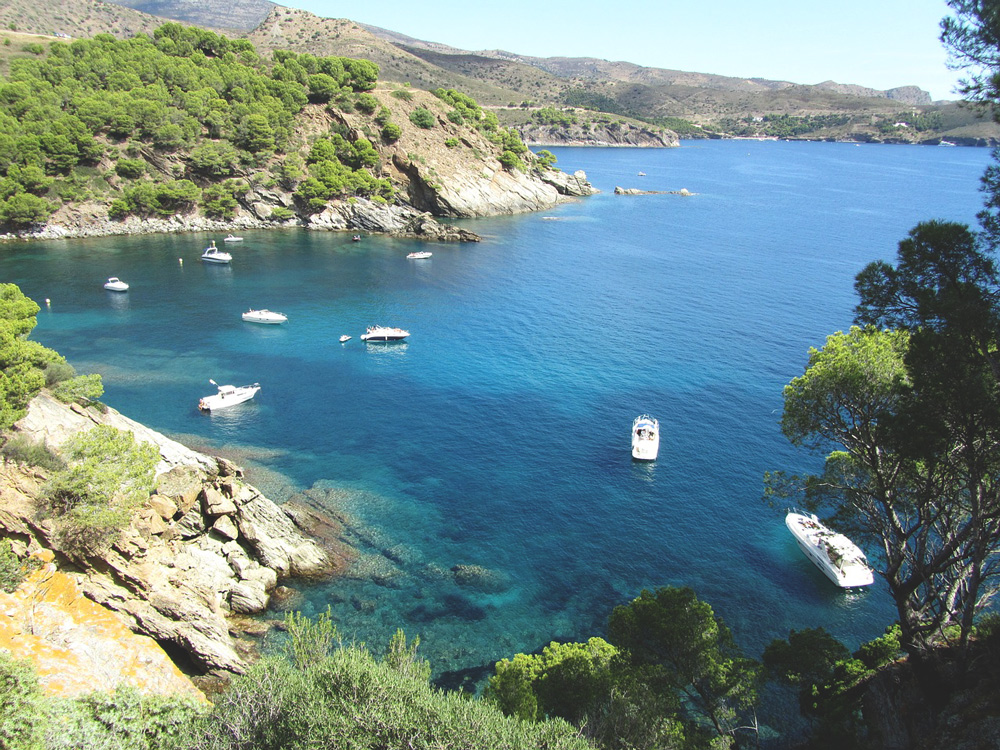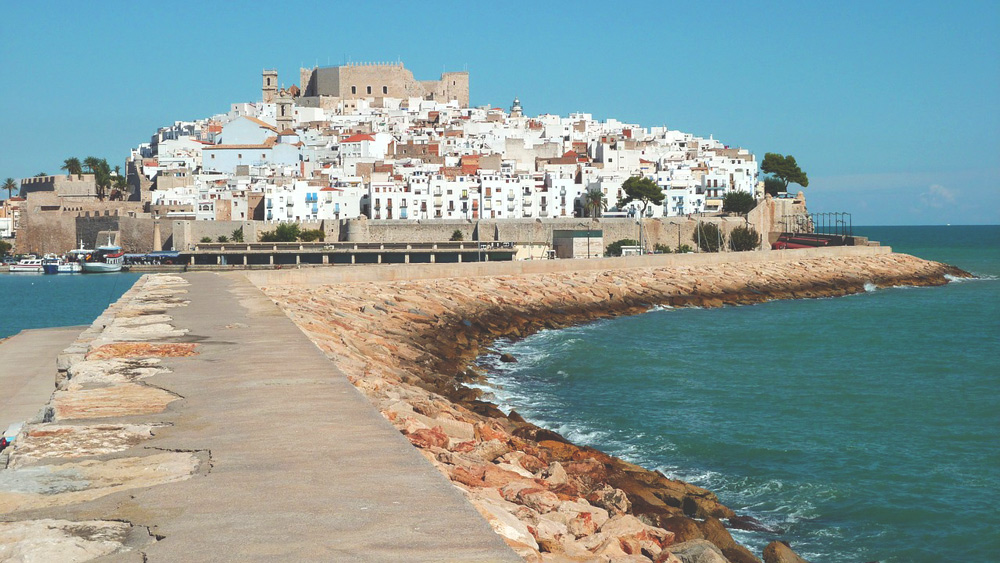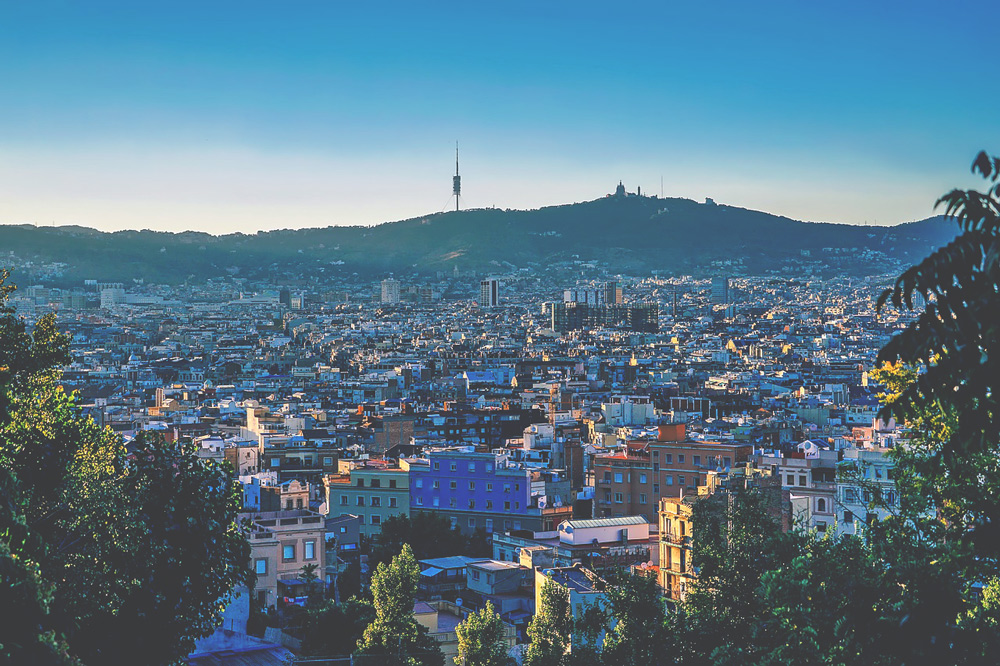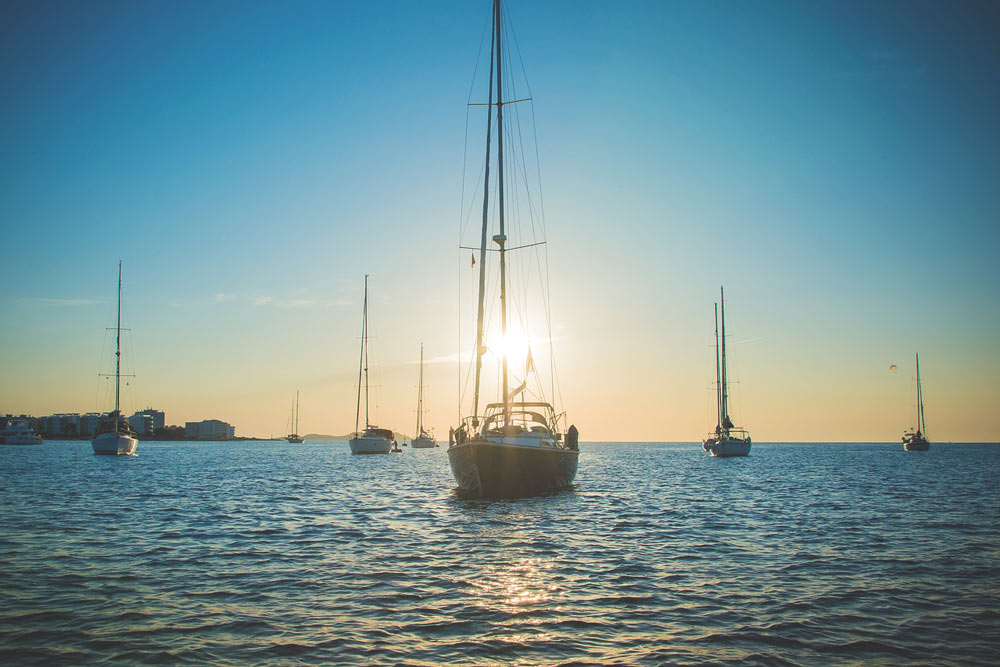Camping in Spain exudes a feeling of freedom and ease. You simply choose where you want to spend the next night. Whether by the sea, in the middle of the forest, in the mountains, or on the outskirts of a city – there will always be a spot available for your tent. Europe has an incredible variety of great campsites to offer. So you don’t even have to travel to the ends of the earth to find one.
We drove along the Portuguese coast in a campervan – starting in Porto and ending in Lisbon. This road trip was unique and showed us that you don’t need a lot of luxury and comfort to travel. It’s important to us that we have a dry place to sleep, sanitary facilities, something to eat, and plenty of adventure and fun. Our road trip through Iceland was simply magical!
Countries like France, Portugal, or Spain are perfect for an unforgettable camping holiday. Here you’ll find stunning landscapes, the mild Mediterranean climate and the Atlantic coast, great beaches, interesting and exciting places, and pleasant temperatures even before and after the high season. Today we’ll show you the best spots for camping in Spain.
- Camping in Spain
- 1. Camping in Andalusia
- 2. Camping in Valencia, Murcia & Costa Blanca
- 3. Camping in Catalonia – Barcelona & Co.
- 4. Camping in Northern Spain
- 5. Camping in the Balearic Islands
- Wild camping in Spain
- Providers for campers and caravans
- Campsites in Spain
- Camping in Spain – Tips
- Booking tours in Spain
Camping in Spain
Spain not only has mainland to offer, but also beautiful islands in the Mediterranean. In summer, it can get really hot here – it’s better to travel to Spain in the off-season! Whether in Andalusia in the south of Spain, Galicia in the north of the country, on the Costa Brava in the east of the country, or on the Balearic Islands – Spain is a great camping destination with a mild climate and pleasant temperatures all year round. In recent years, I have always been to Barcelona in December and had temperatures of up to 22 degrees and lots of sunshine.
1. Camping Andalusia
The southern tip of Spain, Andalusia, and Europe, offers more than 200 campsites in a variety of settings and landscapes. Whether mountains, sea, or city – Spain is a great country for a road trip. In the north, you’ll find the majestic Sierra Nevada, the highest mountain range on the Iberian Peninsula at almost 3,480 meters. Here you can hike, ski, and even snowboard.

Along Andalusia’s 800-kilometer-long coastline, you’ll find numerous historical, cultural, and cozy places. For example, you can camp in Grenada, Marbella, Almeria, or even Seville. Tarifa is also a hotspot for surfers and digital nomads. The surf spot on the sandy beach of Tarifa is ideal for beginners and kitesurfing lessons, as well as for advanced surfers.

At the southern tip of Spain, you’ll find many more surfing hotspots. El Palmar, Roche, Conil – Fontanilla, Conil de la frontera – Rio Salado, Caños de Meca, Barbate Yerbabuena, and many more. Especially from autumn to spring, you’ll find some of the best waves on the entire Costa de la Luz around Conil.
2. Camping in Valencia, Murcia & Costa Blanca
The selection is huge here, too. More than 220 campsites are listed in the Valencia and Murcia regions. Whether it’s sun and beach on the Costa Blanca, the beautiful old town in Valencia, the lively nightlife in Benidorm, the landscapes in Alicante, or Roman remains in Murcia – this region has a lot to offer.

There are numerous highlights in Valencia, such as the City of Arts and Sciences. This “City of Arts and Sciences” forms a stark contrast to the rest of the city. The complex consists of several impressive buildings and landmarks (the Music Palace, the Botanical Garden, and the cable-stayed bridge). In the old town, you shouldn’t miss the Bariio del Carmen. The small streets with their restaurants and bars exude a medieval atmosphere, surrounded by artistic graffiti.

Murcia is surrounded by a mountain range and is particularly captivating for its leisurely pace and tranquility. The “La Trapería” street is a true gem from the 19th century, with banks, cafés, traditional shops, and a casino. Murcia is also home to Spain’s tallest tower, at 92 meters high. You can climb the 200 steps on your own and enjoy the panoramic view of the city.
The journey continues to the Costa Blanca. Here you will find charming landscapes with numerous orange and almond trees. The coast offers numerous leisure and sports activities as well as a mild climate year-round. Kilometers of sandy beaches and unique cliffs characterize the Costa Blanca. Old stone terraces, which often reach up to the mountain peaks, characterize the landscape.

A small highlight in this region is definitely the town of Peñíscola, surrounded by water on three sides. The city’s landmark is the castle, which stands on a hill jutting out into the sea. It transports you back to the time of knights and fortresses. From the courtyard, you have a magnificent view of the Mediterranean, and the keep offers a fantastic panoramic view of the coast.
3. Camping in Catalonia – Barcelona & Co.
Off to the east coast of Spain, heading north. Here, between the Pyrenees and the Mediterranean, you’ll find over 300 campsites. Surely you’ll find the right one for you?! Whether Barcelona, Girona, Lloret de Mar, Tarragona, or Salou – the region is a mix of vibrant cities and diverse landscapes. The mountains in the interior of Catalonia are especially worth a visit.
Barcelona – what an incredible city. We could easily build a house here as a second home. The city is unique and captivates with its mix of beach and sightseeing. Strolling through the city’s alleyways is incredibly fun. The charm and flair are unmistakable. The food in Barcelona is also simply delicious. Be sure to try the typical paella and, of course, the delicious churros.

Beautiful beaches can be found primarily on the Costa Brava and the Costa Dorada. The Costa Brava stretches from the north of Barcelona across the province of Girona. Here you’ll find romantic bays and stunning landscapes. The Costa Dorada is also called the “Golden Coast” and stretches from the Costa del Garraf to the Costa del Azahar. Beautiful cities and excellent beaches will reward your trip to this region.

And don’t forget the mountain ranges in the north mentioned above, the formations of Montserrat and the inactive volcanoes of Garrotxa, as well as the lowlands in the center of the region. Here, in nature, you can quickly forget the worries of everyday life. The mountain range separates northern Spain from the rest of Europe. Here you will find the country’s highest peaks. Whether mountain biking, trekking, rafting, or canyoning – there’s an adventure for every taste.

A trip to Tarragona should not be missing from your itinerary. It is one of the most important cities of the Roman Empire. Numerous monuments, such as the amphitheater, the aqueducts, or the Scipio Tomb by the sea – there’s plenty to see here. The two famous monasteries of Santes Creus and Santa Maria de Poblet are also located here.
4. Camping in Northern Spain
Whether Galicia, Asturias, Cantabria, or the Spanish Basque Country – the north has a lot to offer. The highlight of Galicia is, above all, the city of Santiago de Compostela with its cathedral, old town, and the various pilgrimage routes. The La Ribeira wine-growing region and the Sil Canyon are also worth a visit. On the coast, you’ll find the Illas Atlanticas National Park, Cape Finisterre (the westernmost point in Europe), the Rías Coast, and the Tower of Hercules in Coruña (a Roman lighthouse).

Asturias is located on the green Atlantic coast. Here, you’ll experience the wild side of Spain, nestled between the ocean and the mountains. You can find more than 50 campsites here, most of which are located along the Costa Verde. This coast is lined with rocky coves, beaches, and small fishing ports.

The Cantabrian Mountains are a true natural paradise in the south of Asturias. The legendary peak of the Picos de Europa massif offers wonderful opportunities for extensive hikes. The natural parks of Somiedo, Redes, and Ponga are also worth a visit. Cantabria is also a surfer’s paradise with first-class surfing conditions! The consistent swell and the impressive landscape make this area a true hotspot.

The Basque Country stretches between Bilbao and San Sebastian. In San Sebastian you will find the two beach breaks Playa de Gros and Playa de la Concha. The first is quite well-known and gets very busy, especially in summer. In San Sebastian you can also relax in the old town in the evening and go to parties.
5. Camping in the Balearic Islands
On the islands of Ibiza, Mallorca, and Menorca, you can not only experience wonderful package and party holidays, but also enjoy excellent camping. White sandy beaches, crystal-clear water, secluded coves and rugged cliffs, sleepy villages, and plenty of Spanish flair – welcome to the Balearic Islands.

Ibiza is famous for trendy parties, luxurious clubs, and plenty of glitz and glamour. The rich from all over the world flock here. But if you don’t fancy all the hustle and bustle, Ibiza offers a relaxing nature holiday and magnificent landscapes. Between June and September, you should book in advance, as there are only four campsites on the island.

Menorca is ideal for a nature holiday in the heart of the Mediterranean. Rocky coves, beaches, boat tours, castles, fortresses, and numerous hiking trails invite you to relax and explore. There are only two campsites on the island itself. Here, too, you should book in advance during peak season.
Wild Camping in Spain
Wild camping is officially prohibited in Spain. In some cases, you can even face hefty fines. In extreme cases, fines of up to €5,000 are due! Exceptions: pilgrimage routes to Santiago de Compostela. Here, you are allowed to pitch your tent on either side of the trail for the last 100 kilometers. If you’re traveling with a caravan, you can rest in designated overnight zones.
Camper and caravan providers
- Rent a Camper
- Paul Camper*
- TUI Camper*
- Surf Cars
- Indie Campers
- Campanda*
- Hang Time
Campsites in Spain
There are countless campsites in Spain. You’ll find simple pitches as well as very well-equipped facilities with restaurants, pools, supermarkets, and other amenities. On the website www.camping.info you will find a large selection of campsites in Spain. You can see reviews, prices, amenities, and photos directly.
Also check out the Camping Card or Euro Camping websites. There you will also find a good overview of campsites in Spain. Of course, prices vary depending on the season. Sometimes it’s €15, sometimes €60 per night. However, you can also find some free pitches in Spain.
Camping in Spain – Tips
If you are traveling in Spain with your caravan, you should familiarize yourself with the traffic regulations beforehand. In built-up areas, the maximum speed is 50 km/h. Outside built-up areas, you can drive 80 km/h, and even 90 km/h is permitted on country roads with two or more lanes. On Spanish motorways, the speed limit is 100 km/h. If you ignore this, it can be expensive.
You should also be aware that you have to pay tolls on all highways in Spain. The amount varies depending on the vehicle and the route. You can find out more on the ADAC website. Expect to pay around €8 to €10 for 100 kilometers.
Book Tours in Spain
You can take various tours in Spain or excursions in the surrounding area. How about a day trip to Malaga, Gibraltar, Tarifa, or Ronda and Nerja, for example? From many cities, you can reach many great highlights in Andalusia in less than 1 to 2 hours. Get your Guide offers a wide selection of excursions and tours.